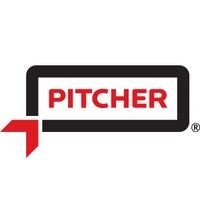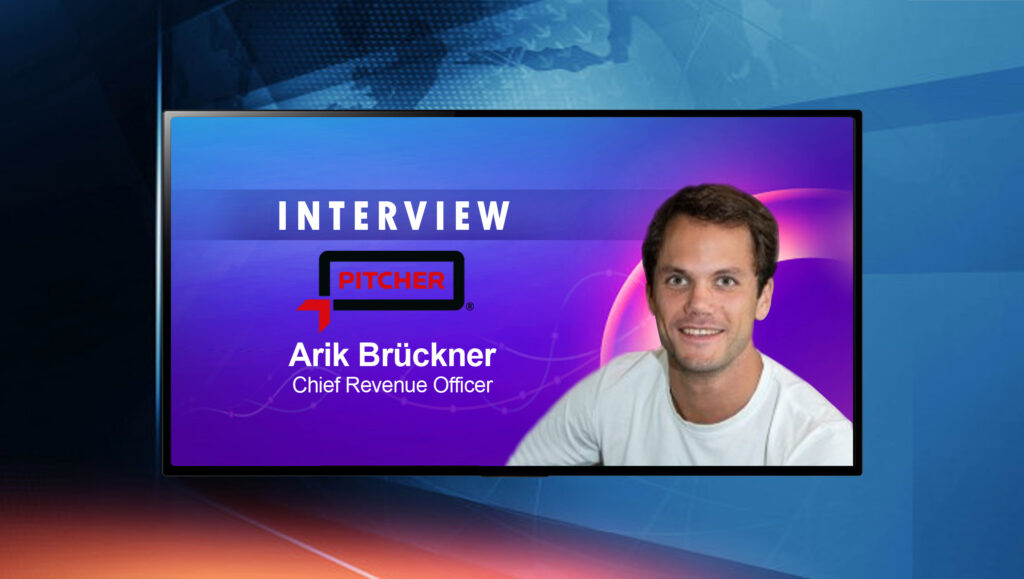Besides sales processes, the ways in which customer engagements have to be planned have changed drastically during this ongoing pandemic, Arik Brückner, Chief Revenue Officer at Pitcher AG shares his observations while taking us through the key capabilities of the Pitcher sales enablement platform in this chat. ________ Since I was a little kid I have been passionate about sales. From selling freshly baked bread in the neighborhood or the perfumes of my sister during her studies abroad (she wasn’t amused…) to customized USB flash drives during high school. When returning to Zurich after an internship in Silicon Valley the opportunity at Pitcher seemed like a great fit combining two of my passions: sales and technology. During the past 9 years I was able to grow with the company and had the opportunity to get a first-hand experience of the roles that are in my team today (sales, service delivery, marketing, alliances). Pitcher, over the years, has developed into the SuperApp for corporate sales people across the world. The SuperApp offers value for sales people by improving each step of the sales process, enabling productivity beyond traditional Sales Enablement use cases. That is also why we focus on particular industries. We have industry solutions for Life Sciences, Consumer Goods, Manufacturing and Financial Services covering use cases from the traditional sales presentation and CRM integration to things like sample management, consent management, order taking, remote presentations, coaching, shelf or site audits and many more. Today we have customers in over 140 countries. Read More: SaleTechStar Interview with Maria Graham, Director of Sales, Nuspire The pandemic has drastically increased the customer expectation towards interactions with sales people. Where before you were able to build a relationship by having a meal or coffee together or by being in a face to face interaction having the full attention of the customer, sales people now have an almost exclusively remote interaction dealing with the attention span of a world where most calendars are packed with back to back Zoom calls all day. What that means for sales is that a) there are much more customer interactions and b) it is more difficult to differentiate since most of the soft factors are transmitted only in a reduced form or completely removed in a remote conversation (e.g. handshake, facial expressions, posture etc.). What this means as a consequence is that what is being discussed during the interaction needs to be more personalized, more relevant and more agile in order to satisfy customers. That is where sales technology comes into play, solving the problem of having more meetings while needing the content to be more personalized using content automation, and covering multiple use cases within the same application. For sure this elevated customer expectation towards sales interactions is here to stay. Also we’ll see a tremendous increase in the hybrid sales rep concept where a majority of meetings will stay of remote nature and only a certain portion will go back to face to face. In a largely remote world today I believe we need to think about how we can create experiences and interactions outside of the regular home office environment sitting on a chair in front of a screen. Personally I like the concept of hybrid experience, i.e. mixing remote with live experience. This could mean sending a meal via a delivery service to a customer or prospect in order to have a breakfast or lunch meeting while interacting through an online meeting service like Zoom. Other possible formats are like meeting for walks, drinks or even more interactive activities like food tastings or cooking classes. Technology will then have to accommodate efficient communication of relevant content and ad-hoc execution of activities without delay. I believe sales enablement tools will have to become the “super power” of sales people. By that I mean they must really facilitate a streamlined user experience across all the activities they have to conduct during a day, be it remote or in person. Automation will be not just which content piece or tool to use at which stage of an opportunity but also what is displayed inside a content piece (e.g. personalizing calculators and presentations with data from the CRM). The next step is then to feed information back to the CRM throughout a meeting. Data on content usage together with data sources like CRM and ERP can become powerful combinations to drive AI engines to continuously improve the automation process described before. Add voice analysis and gaze tracking to that and you’ll know exactly which type of content triggers what kind of reaction on the customer side in order to serve more relevant content and to accelerate pipeline progression. An important area will be the embedding of different channels into the sales process. Buyers will want to communicate on the channel they feel comfortable with, not the channel the seller has to offer. This brings several challenges with it: Depending on the industry it can be a requirement to store customer communications centrally which is in contrast with encryption and privacy statements from social messaging services. On the other hand, being available on many channels can become a challenge for sales people having to monitor and be able to communicate across all of these channels. Luckily sales technology is equipped to solve challenges like these in a digital buying world. It is critical to accept that the sales process and nature of customer interactions has drastically changed and is most likely not going to return to what it was before the pandemic. I believe it is the responsibility of sales leaders to prepare their teams for this changed environment by offering specific social selling, remote interaction and hybrid experience training while taking extra responsibility when it comes to the well-being of team members. The pandemic hasn’t simply changed the way we interact with customers but is also challenging us in regards to self-management. Sales leaders need to be aware of the personal challenges team members face since it can endanger the level of motivation of an individual. Lastly it is our responsibility as leaders to enable our sales teams with the right technology to limit manual preparation and reporting of activities as much as possible allowing them to focus on what really matters: the customer. This only works if tools are industry focused, holistically looking at sales people’s activities and connecting the sometimes very fragmented technology landscapes within companies. Read More: SalesTechStar Interview With Ran Goldi, CEO At First DAG Pitcher is the leading global sales enablement provider of effective customer engagement and sales efficiency through dynamic digital tools, personalized content, and simplified user experience. Launched in 2011, the Pitcher Super App for sales enablement is deployed in 140 countries, and Fortune 500 companies across the life sciences, consumer goods, manufacturing, and financial services industries use Pitcher to drive customer engagement and commercial excellence. DigniFi redefines how car repair loans should be. Arik Brückner is the Chief Revenue Officer at Pitcher, the leading provider of mobile sales enablement and content management, where he leads global sales. Prior to Pitcher, Arik was the founder of PC and Mobile World, where he spearheaded some of the earliest sales of customizable USB drives. Hi Arik, welcome to this chat! Tell us about your journey through the years…and a little about the Pitcher sales enablement platform
We’d love to hear your thoughts on the impact of Covid-19 on sales and what you feel some of the permanent changes are set to be?
Seeing the key changes in customer trends and buying behaviors today, how do you feel customer journeys and sales technologies need to be rethought to create better impact: a few takeaways for sales teams?
What are some of the thoughts you have around the future of sales enablement tools, can you highlight a few leading providers (their features / capabilities) you’ve been following closely from around the world?
How according to you will the future of customer engagement in a digital buying world start evolving…to change the face of customer engagements as we see it today?
A few thoughts on what you feel today’s sales leaders need to do to motivate, train and uplift their teams to optimize business and sales performance, and the sales technologies you feel sales teams should have to drive outcomes?

How Should B2B Tech Marketing and Sales Leaders Plan Improved Processes through 2021? Catch More:






















